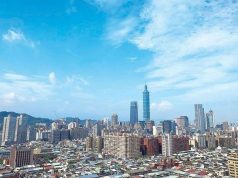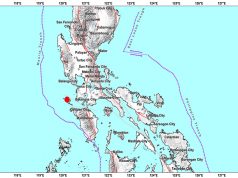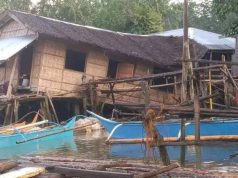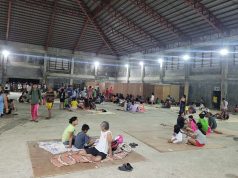Amid the eruption of the Taal Volcano, local Twitter called for scientific terms such as “phreatic eruption”, “alert levels” and “ashfall” being used around to be defined for better understanding of the public.
Some science advocates later took the time to make threads to define these terms online.
Volcano-related terms
Ashfall
The term “ashfall” started making rounds online after Taal Volcano spewed ash on the afternoon of January 12, which later spread throughout CALABARZON and Metro Manila.
The U.S. Geological Survey (USGS) describes ashfall as a “hard rain” of abrasive particles of volcanic ash.
Despite being termed “ash,” volcanic ash is not the same dark material produced by combustion. It comprises “small jagged pieces of rocks, minerals, and volcanic glass the size of sand and silt” that can be extremely harsh on the skin and on the eyes. It can also be corrosive and can be a conductor of electricity when wet.
Phreatic explosion/eruption
The term “phreatic explosion/erosion” was used to describe Taal Volcano’s eruption that produced the volcanic ash.
According to USGS, phreatic eruptions occur when water beneath the ground or on the surface received intense heat from the mixture of volcanic materials of lava, magma, hot rocks and new volcanic deposits.
It will then cause water to boil and produce steam, similar to what happens when you boil water in cooking.
In this case, the intense heat, which can go up as high as 1,170°C for basaltic lava, can generate an explosion of mixed gas (steam) and volcanic ash.
Alert levels
State-run Philippine Institute of Volcanology and Seismology (PHIVOLCS) has four alert levels for volcano monitoring.
Alert Level 1 – No imminent eruption. However, there’s already magmatic, tectonic or hydrothermal disturbance being monitored.
Alert Level 2 – It could eventually lead to an eruption due to probable magmatic intrusion. It can return to alert level 1 if the trend declines.
Alert Level 3 – Hazardous eruption is possible within days or weeks. Similar to the previous, it could return to level 2 if unrest decreases.
Alert Level 4 – Hazardous eruption is possible within days.
Alert Level 5 – Hazardous eruption is ongoing. There’s extreme hazard to provinces and communities west of the volcano and ash fall where the wind would be blowing.
As of publication, volcano monitoring is still in Alert Level 4.
The Philippine Red Cross shared an infographic on these alert levels on Twitter.
Itinaas na sa Alert Level 4 ang Bulkang Taal. Maaari itong sumabog sa loob ng ilang araw.
Maging ligtas at tumutok sa mga updates at payo ng mga opisyal. I-dial ang Red Cross Hotline 143 kung nangangailangan ng tulong. pic.twitter.com/HRLwiEP4r5
— Philippine Red Cross (@philredcross) January 12, 2020
Lightning from the volcano
Photos and videos of lightning strikes amid the dark ash cloud on the volcano caused amazement and fear on Twitterverse.
Lightning strikes at the Taal Volcano smoke after its phreatic eruption earlier today.
📸: Brandenberg Milla pic.twitter.com/JnFJkikNjt
— ONE News PH (@onenewsph) January 12, 2020
Filipino geologist Mahar Lagmay explained that such phenomenon happens when friction among particles became electrically charged.
These charged particles get separated when plume or ash cloud ascends during an eruption. When the separation becomes too much, lightning forms to connect the positive and negative charged particles.
While volcanic lightning is obviously dangerous, the exact level of danger it has on its surroundings has yet to be determined due to difficulty in monitoring.
“Studying lightning generated during volcanic eruptions has its obvious dangers, but even if the eruption can be observed from a safe vantage point, getting a good look at lightning strikes within the plume can be a challenge,” a scientist from Earth Magazine said.
Eruption and volcanic deposits
The terms eruption, magma, pyroclastic flow and eruption flow are all related to how volcanoes erupt.
Beneath the surface of the Earth is a thick flowing substance called magma. Magma flows and gathers within pockets called magma chambers, which soon pushes through the vents and fissures to the surface through the volcano’s vent, and subsequently, causes an eruption.
Magma that flows out of the volcano is then called lava.
Aside from lava, the mass of erupting debris and volcanic gas that rises directly above the vent in a column-like way is the eruption column. This is often used interchangeable with plume and ash cloud.
What PHIVOLCS is watching out for is the pyroclastic flow. It’s an extremely hot mixture of over 800°C filled with “rock fragments, gas, and ash that travels rapidly (tens of meters per second) away from a volcanic vent or collapsing flow front.”
Seismic swarms and volcanic tsunami
Because of the impact, a volcanic eruption normally causes a series of minor earthquakes called seismic swarms.
If these tremors disturb the ocean floor, they may cause disastrous sea waves called tsunamis.
PHIVOLCS have previously recorded seismic swarms in communities near Taal Volcano.
Pneumonoultramicroscopicsilicovolcanoconiosis
Pneumonoultramicroscopicsilicovolcanoconiosis, one of the longest words in the dictionary, is a scientific name for a disease that causes inflammation of the lungs due to inhaling fine silicate or quartz dust.
Pacific Ring of Fire
The Pacific Ring of Fire, which the Philippines is part of, is a path or a region along the Pacific Ocean where 75% of Earth’s volcanoes are located and earthquakes often occur.
Also known as the Circum-Pacific Belt, the path traces the following tectonic plates — the Pacific, Juan de Fuca, Cocos, Indian-Australian, Nazca, North American and Philippine Plates.










